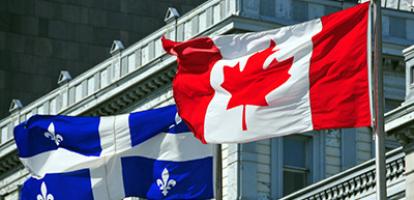From: Trevor Tombe
To: All Canadians
Date: October 19th, 2016
RE: What Carbon Pricing Means for Canadian Households
This month, the Government of Canada proposed a national price on greenhouse gas emissions. Provinces have two choices: (1) a carbon tax of $10 per tonne in 2018, rising to $50 by 2022; or (2) a cap-and-trade system consistent with Canada’s emissions target.
Many are understandably concerned about the costs for households. What’s a reasonable estimate to start the discussion?
Let’s start with direct costs. Gasoline, natural gas, and other fossil fuels, will all become more expensive. At $50 per tonne, a carbon tax adds over 11 cents per litre of gasoline and $2.50 per GJ of natural gas. Using Statistics Canada data on average household purchases and energy use, I estimate a direct cost just shy of $600 per household per year. (In a recent online piece for Maclean’s, I provide more detail.)
But this average masks large differences across households. For one person households, direct costs average $300; for couples with children, $800. For households in the bottom 20% of the income distribution, direct costs approach $250 per year; for the top, $1,000. For households in Saskatchewan, $800; for BC, half that. The potential comparisons are nearly endless.
There are also indirect costs. Goods and services will become more expensive, as transport and heating bills for businesses grow. If these added costs are passed through to consumers, then household expenses will grow. Not surprisingly, estimating this is difficult. In Alberta, government estimates suggest indirect costs of $100-200. Nationally, recent research in the Canadian Tax Journal by economist Nicholas Rivers suggests a $30/t carbon tax would increase the median household’s costs by about 1%. At $50/t this implies indirect costs of roughly $600, for a total cost of $1,200 for the average household.
In any case, there are options to mitigate these costs. Installing a smart thermostat, buying more fuel-efficient vehicles, and so on, will lower costs. How provinces spend the carbon revenue is also critically important. Rebates can easily exceed carbon tax costs for low-income households, and tax reductions increase disposable incomes for others. British Columbia, for example, collects just over $1.2 billion in carbon revenue, but returns $1.3 billion in rebates and tax cuts (excluding film subsidies). Costs increase, but if governments want so too can incomes.
Finally, industry support may prevent some costs from rising in the first place. In Alberta, for example, the government will combine a carbon tax with output subsidies. Power prices are unlikely to rise significantly, but with subsidies tied to output (not emissions) lower emission sources will have an advantage. This makes some sense, as we are less concerned with (fairly inelastic) electricity consumption than with emissions from generators.
As the new policy develops, better estimates will come. In the meantime, avoid giving too much weight to exaggerated cost estimates and instead focus on the core question before us: Should we take action on GHGs? If we should, then as many economists will tell you, pricing is the least-cost option.
Trevor Tombe is an Assistant Professor of Economics at the University of Calgary and Research Fellow at the School of Public Policy
To send a comment or leave feedback, email us at blog@cdhowe.org.





